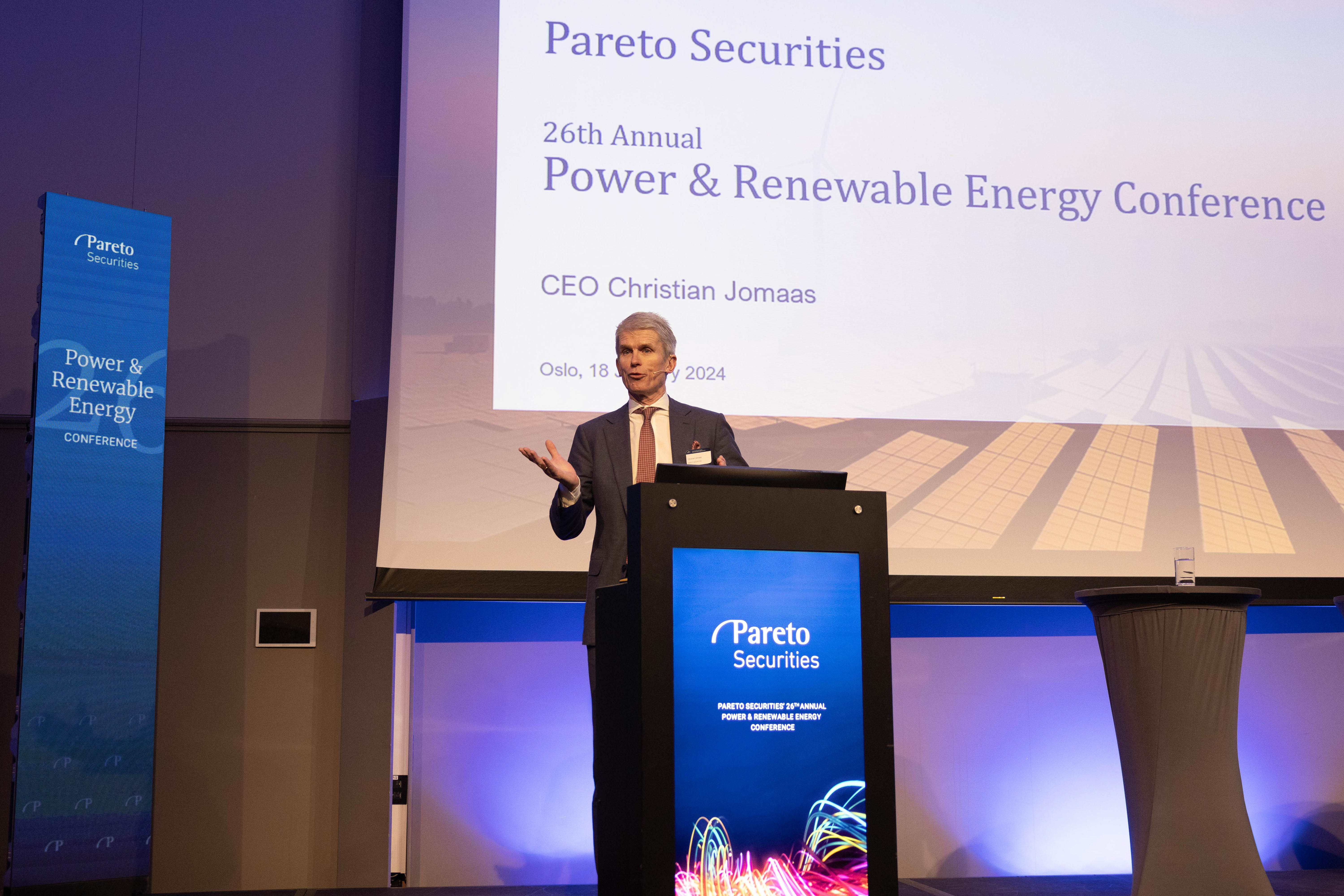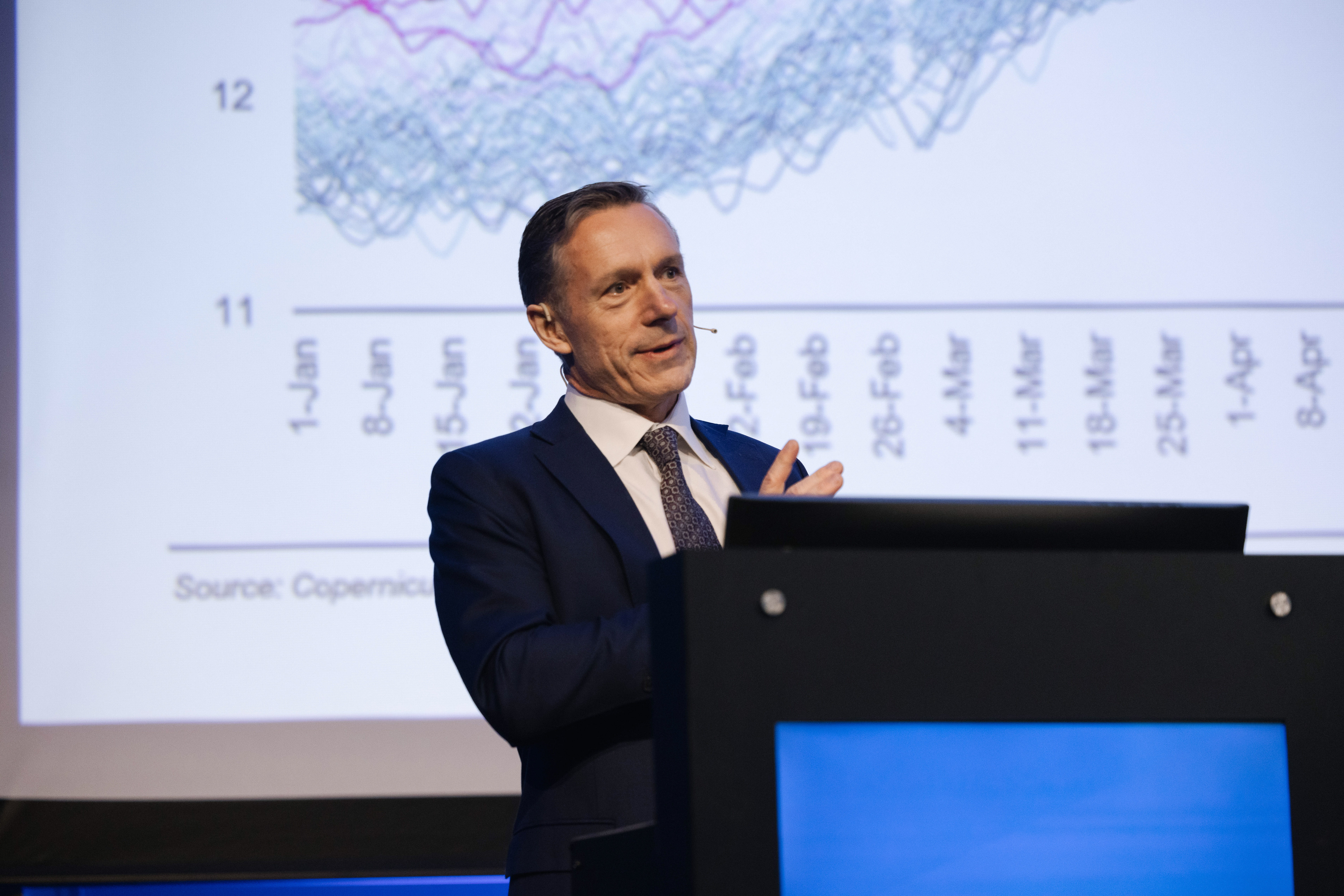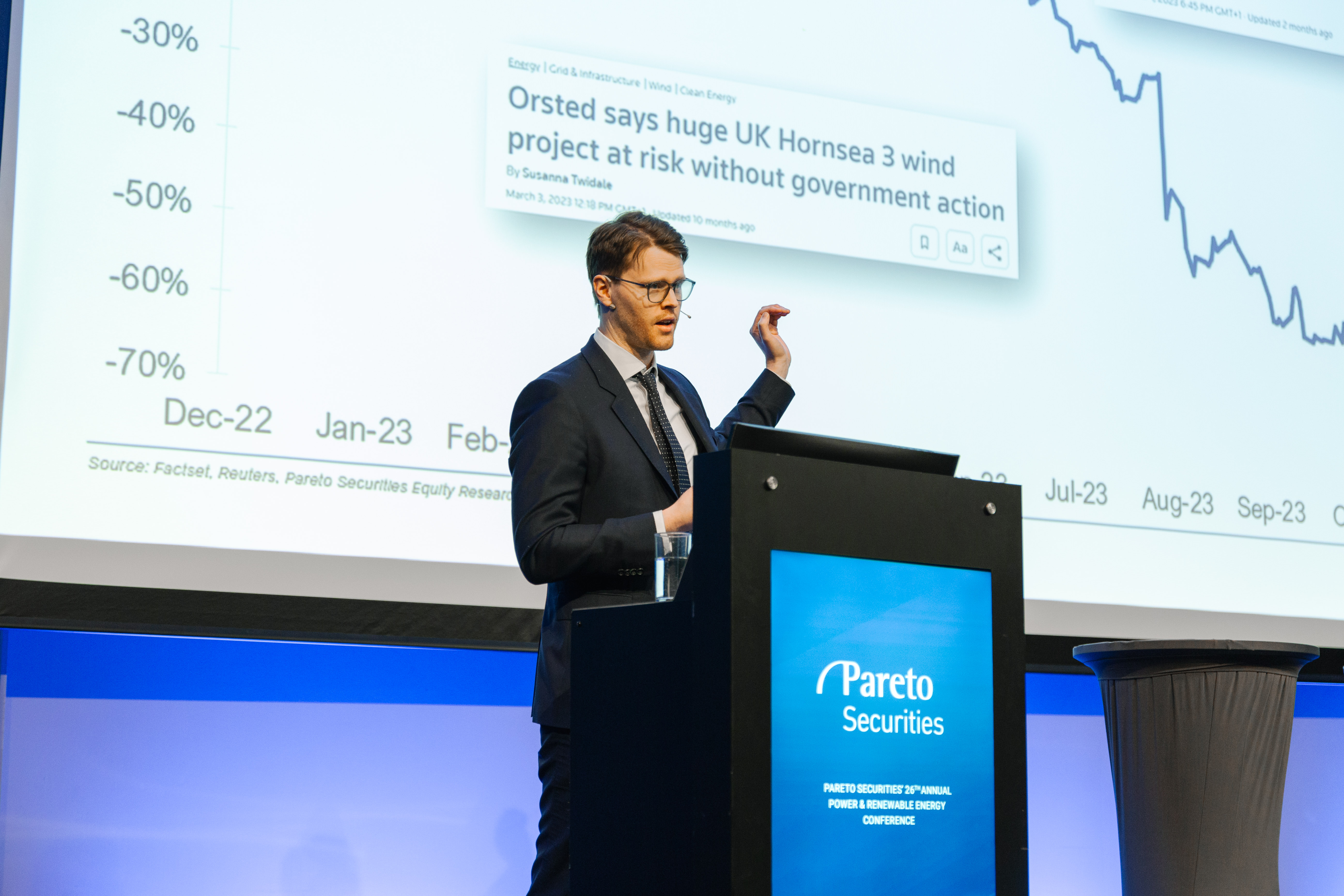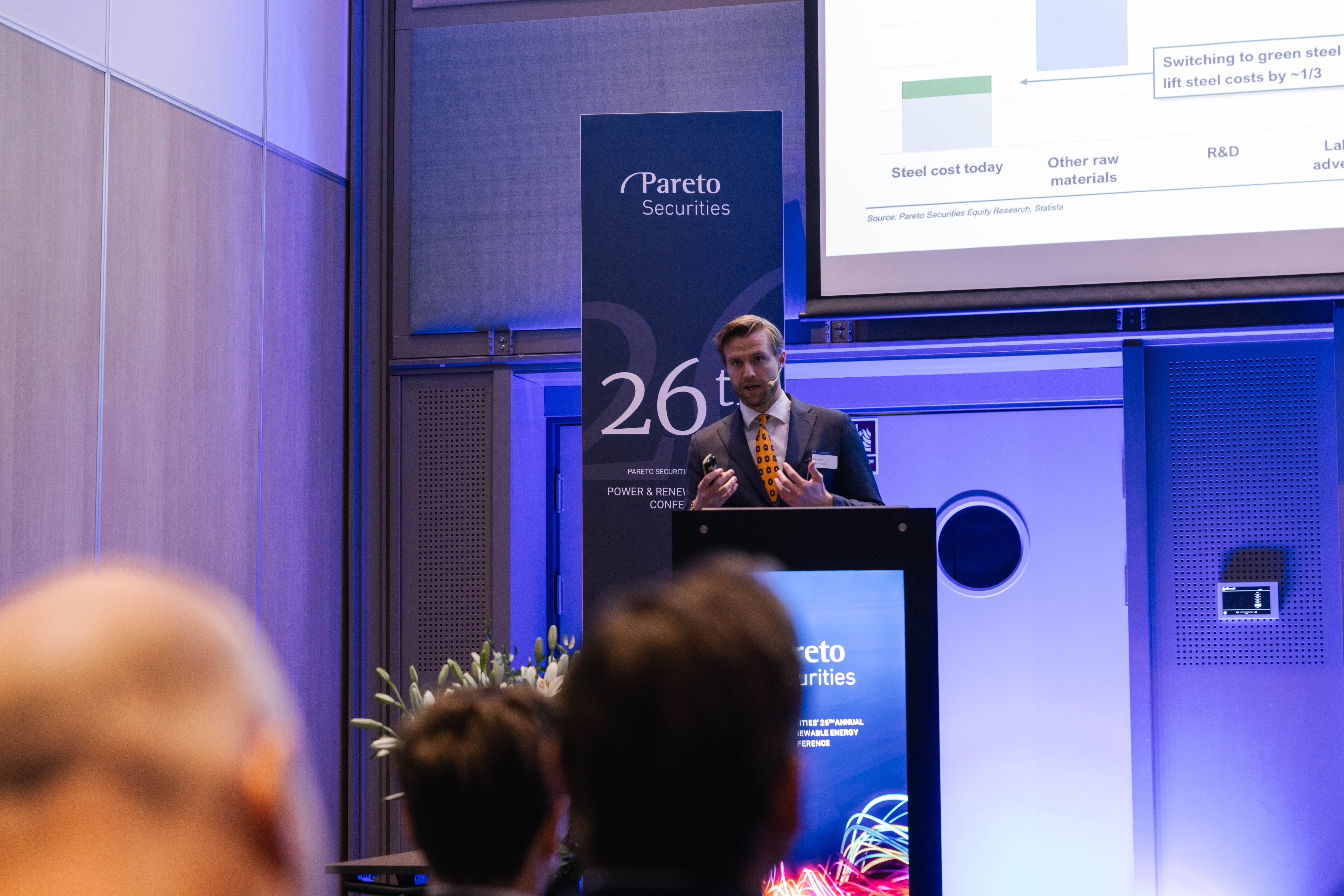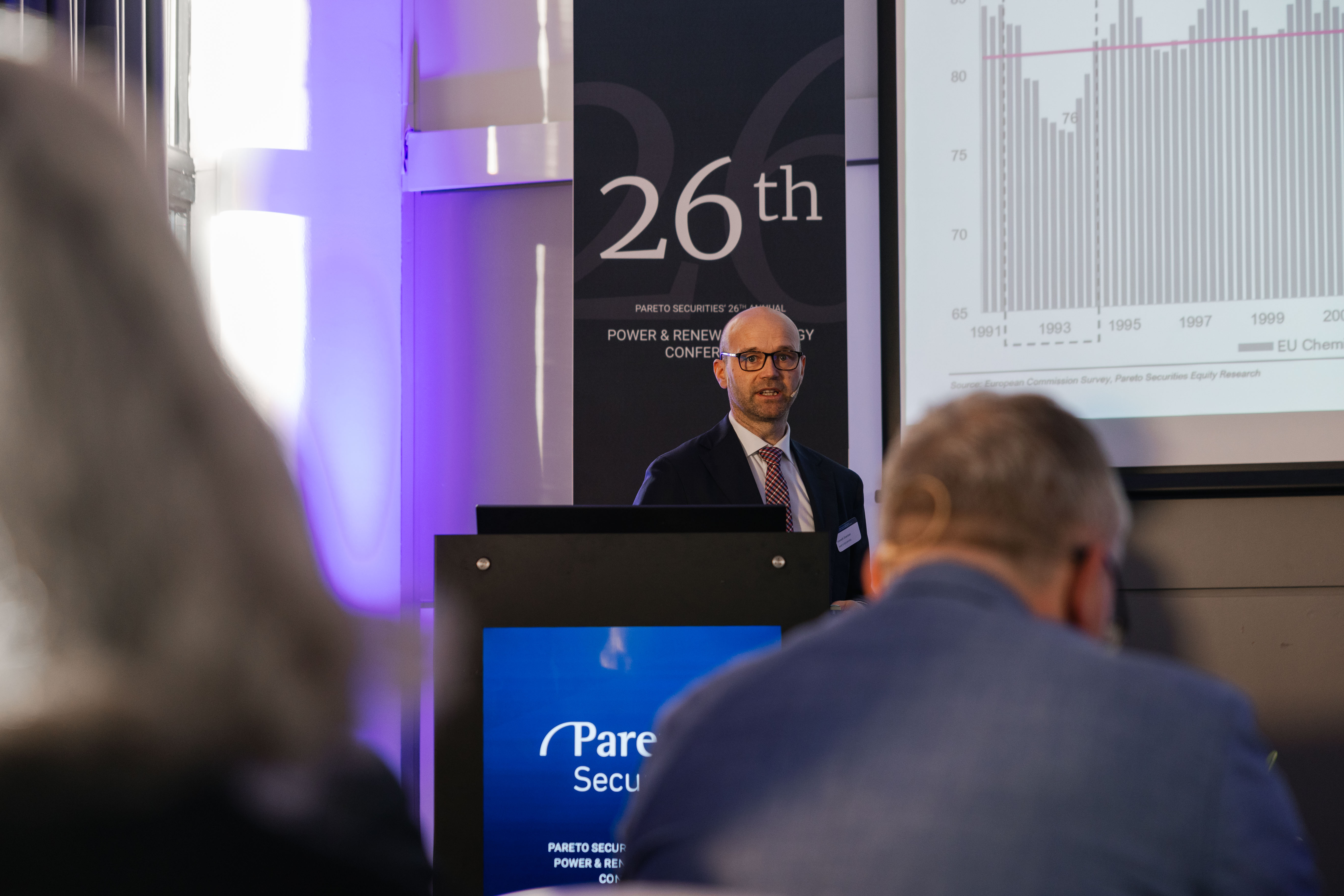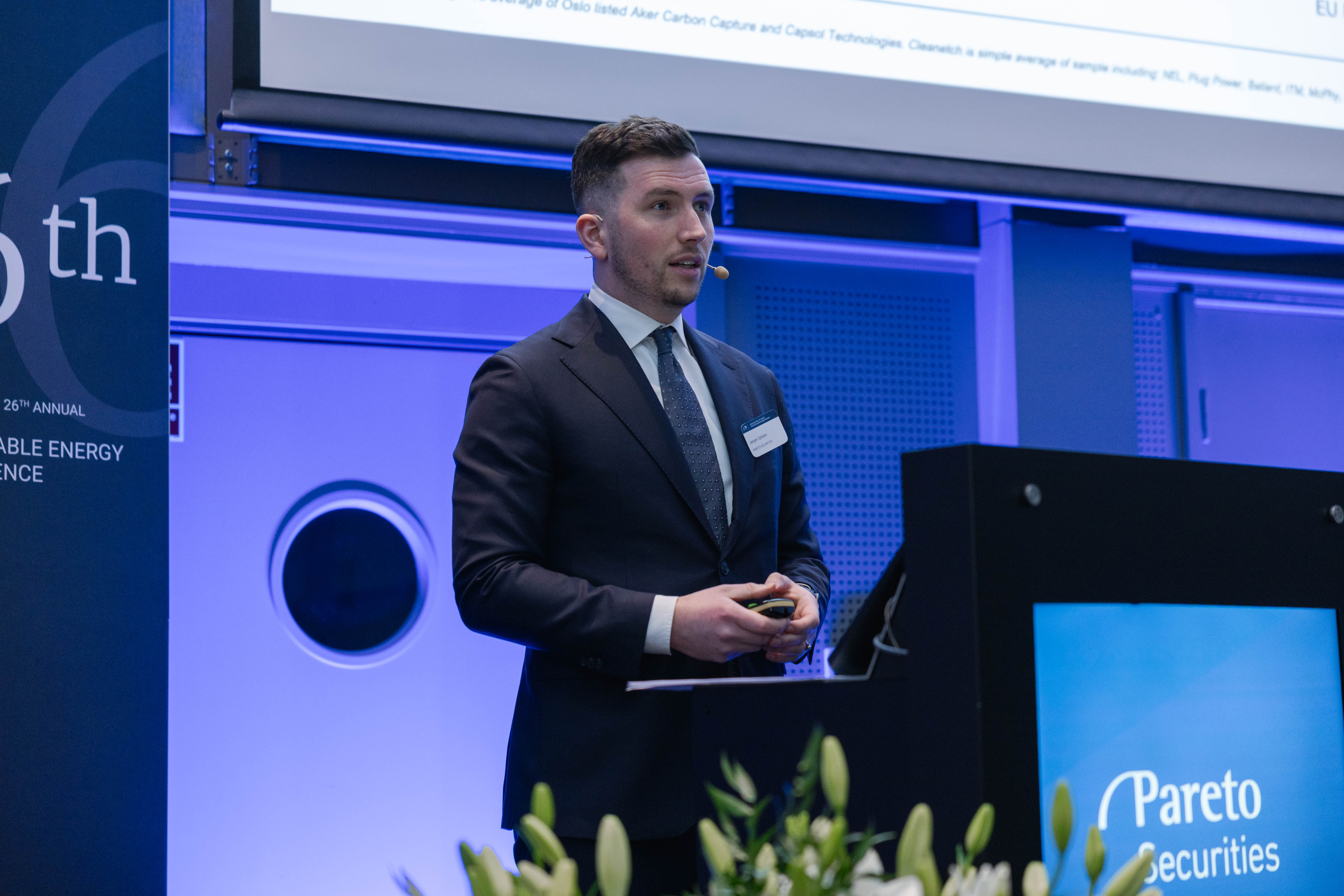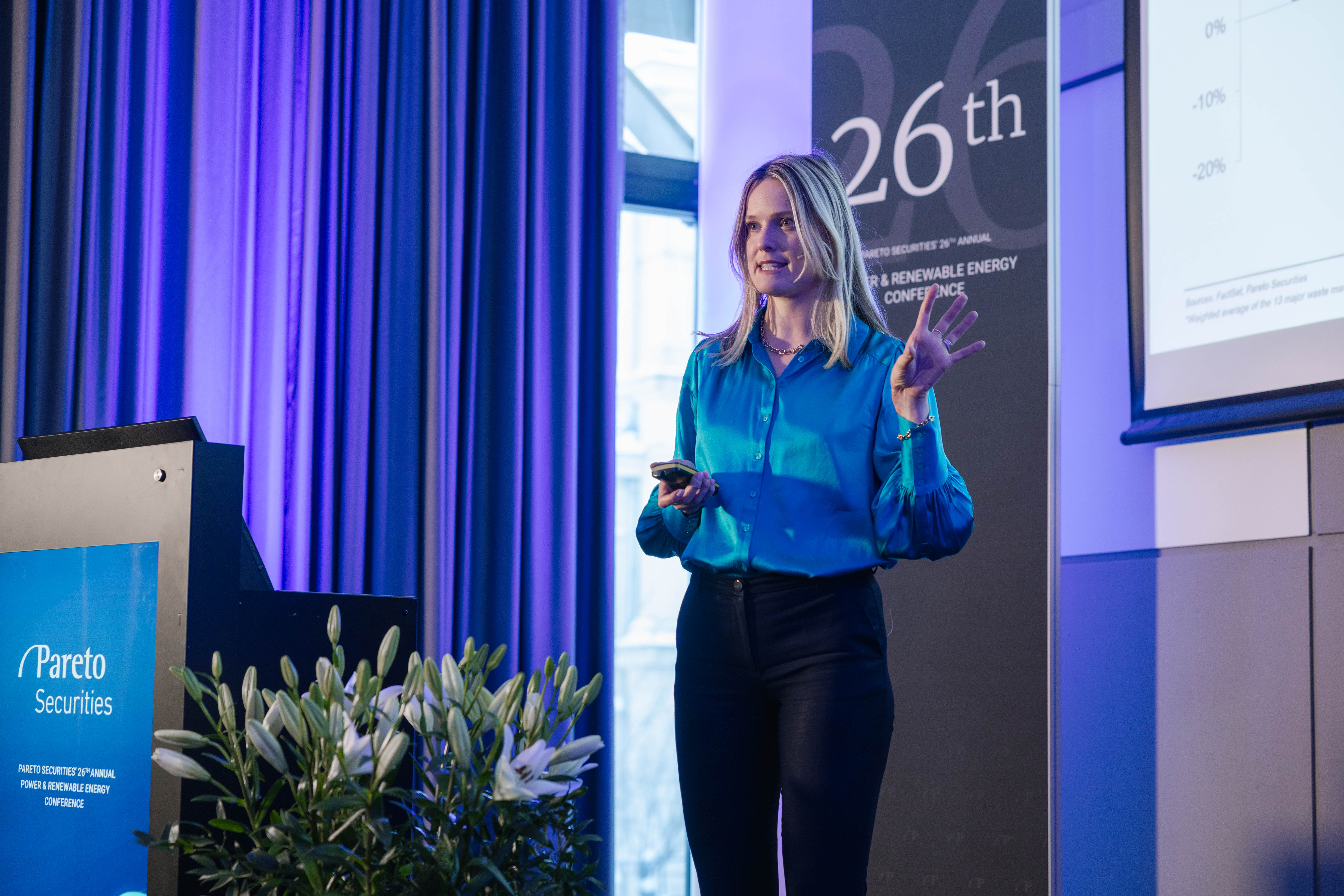The energy transition is continuing at a record pace, driven by higher-than-ever investments in renewable energy. In 2023, investments in solar power were higher than for oil production - for the first time ever.
Renewable investments are increasing sharply, but we need to invest significantly more to meet future energy needs
Christian Jomaas, CEO of Pareto Securities
However, even more investments into renewables are needed to build enough renewable energy capacity. Looking at Norway alone, the power supply surplus is quickly being consumed, driven by consumer growth, electric transport, data centres, hydrogen, and electrification. Latest estimates predict that Norway’s power surplus will be gone by 2028.
We believe 2024 could be a turning point for renewables and cleantech
Lars Ove Skorpen, Power & Renewable Energy Director at Pareto Securities
Interest rates are coming down, giving reduced cost of capital. Meanwhile, inflationary pressure is easing, we are now seeing governments increasing support for offshore wind, and we expect to see further reductions in the levelized cost of electricity (LCOE).
An energy crisis has been averted, but power prices in Europe and the Nordics are here to stay at a significantly higher level compared to the pre-covid level.
Last year was the warmest year on record, with a global temperature of +1.48 degrees above the preindustrial average. We are already very close to reaching the 1.5 degrees, agreed in the Paris agreement, and we therefore urgently need to invest more in renewable energy and renewable technologies.



